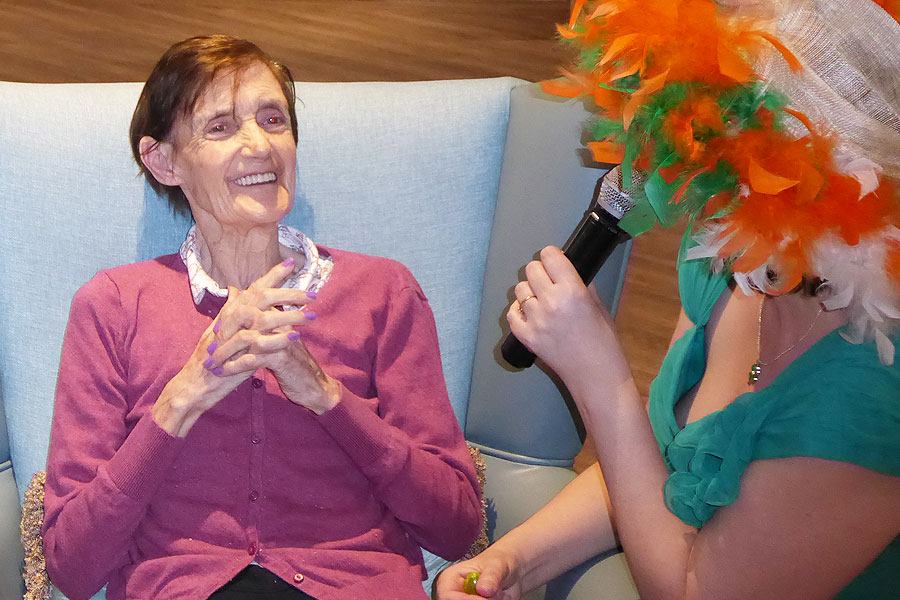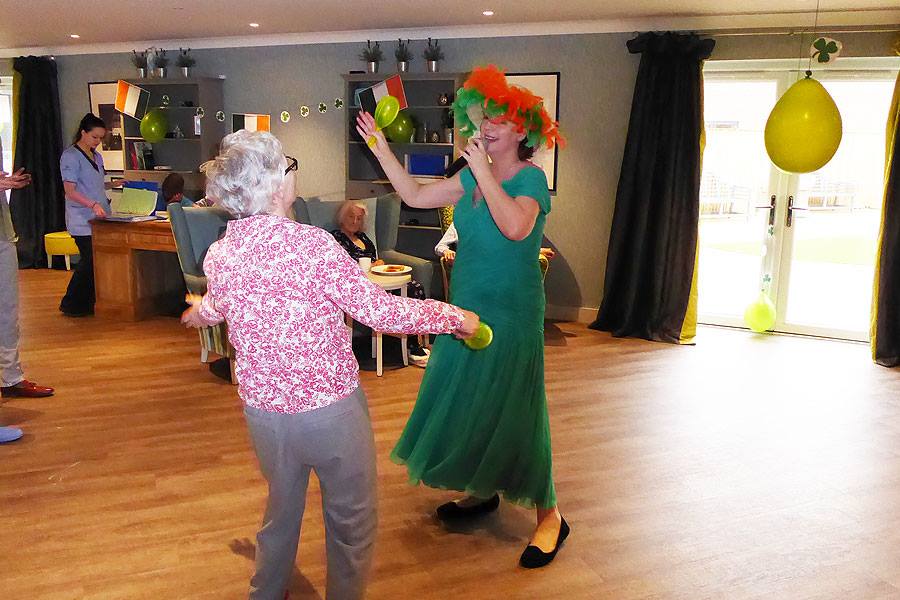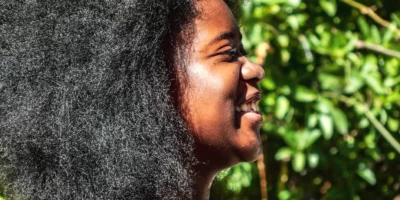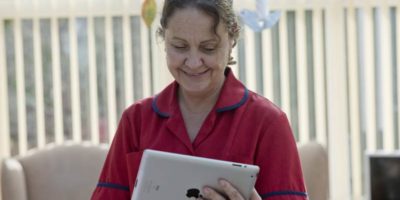Singer and entertainer Sandra Currie shares some of her top tips for getting sleeping residents engaged with your activities and music sessions
I go into care homes to do nostalgia singing sessions and I often find I have to start things in a room where nearly everyone is asleep. With a few careful and thoughtful tactics, I can usually have most people awake and singing along by the end of it, depending on what stage theyre at.
The Room: Put all the lights on. I can’t overstate how important this is – and just this simple act will help in all activities. With dementia and nursing units – shut the windows. Nothing makes people retract into themselves more than being uncomfortable, and older people feel the cold very quickly, even when busy carers are warm.
Background: Put a singalong CD on (I use Max Bygraves as a warm-up CD before I put my own backing music on). But put it on ‘quietly’, just loud enough that it’s breaking into people’s sleepy minds, but not loud enough to be intrusive on their peacefulness. As each track ends, turn up the volume a little bit. I take three tracks of background music before it’s loud enough for everyone to hear and know that there is music on.

Gentle Beginnings: Start singing yourself. I’m not entirely sure why this works, but while I’m setting my equipment up, I aim to get the music to the right level and start singing along (no microphone), as if I’m singing to myself, before I do anything else. As soon as I start this singing along to the CD myself while I’m pottering around getting stuff ready, one or two residents will join in. And after a few minutes, many of them will be singing.
Stand Up: Very important. Stay standing and moving around while youre singing or setting up. Catch every resident’s eye, smile be extremely smiley – it makes them feel they are important and you’re glad they’re there.
Stand Out: Wear something bright if possible. If you’re in your uniform, add something to it, to show that this is a special event – a silly hat is great, a colourful garland, anything to make you into a beacon for residents’ eyes to follow.

Be Familiar: Learn at least ten songs that your residents will know, and research what they will like – you can often work this out based on age groups etc. Announce each song before you start singing it. “Let’s sing ‘Daisy Daisy…'” This gives the resident prior access to the memory of the words, the feeling that they’re already familiar with the song – “I know this one!” – even just a few seconds head start on knowing what the song’s going to be, has a massive difference on whether they’ll be able or want to sing it or not.
Microphone: If you have access to one, I’d highly recommend using it. It allows you to be heard over the sound of everything else going on, and the important thing in my opinion, is to set it so it’s the same volume as someone would hear if they were being spoken to by someone sitting right next to them. So – set it loud enough for everyone to hear, but then sing or talk into it very softly.
Use Percussion: This is a big one. It can be a really good tool to use for a host of activities and music sessions. If people don’t want to sing, they might still want to join in, instruments are great. Maracas, small light tambourines, jingle sticks, long sticks like composers use – something, anything, for the resident to hold is a huge advantage. Leave them around the room, hand them out, gently place them beside a resident, make it easy and safe for them to feel involved. They allow the resident to join in with the rhythm, (especially good for a non-communicating resident) but also, they allow you to point to the resident, with your maraca, for example, and shake it in their direction, making different movements with it, which the resident can copy. In other words, it allows you to make it personal to that resident in a way that you can’t do by pointing your finger, because that’s seen as rude.

Percussion instruments also seem to help a resident to feel part of what’s going on from the very beginning. They’re holding something that’s just for this occasion, it all adds to the fact that this is an event, not just another hour passed. You’ll even see lots of residents with their eyes closed and you might assume they’re asleep, but you’ll notice the maraca moving, because they are a part of this in some way.
In the end, it’s all about keeping the room going. I often think about the ‘spinning plate’ analogy – have you seen the magicians who set up plates spinning on spikes, and whenever one looks like it’s slowing down, they give it a quick extra spin to stop it toppling off? That’s what you have to do – once someone is engaged, keep directing your focus on them, then move to the next person, and move back again, then have three plates (residents) engaged, then add some more … after a few minutes they’ll be actively waiting for the next time you direct your huge smile, maraca and expressive eyes at them.
Good luck!
Sandra Currie is a dementia-trained singer and care home entertainer with 17 years experience. Find out more, including her vocals-only specialist CD for dementia, nursing, bedrest and palliative care at www.sandracurrie.com




